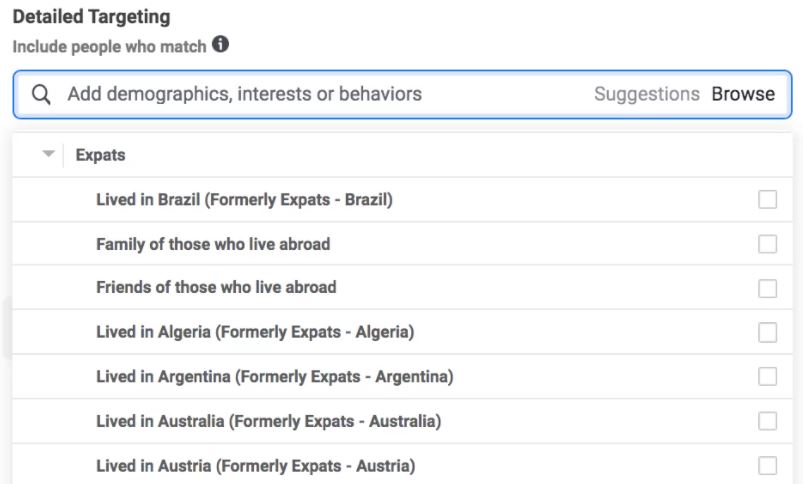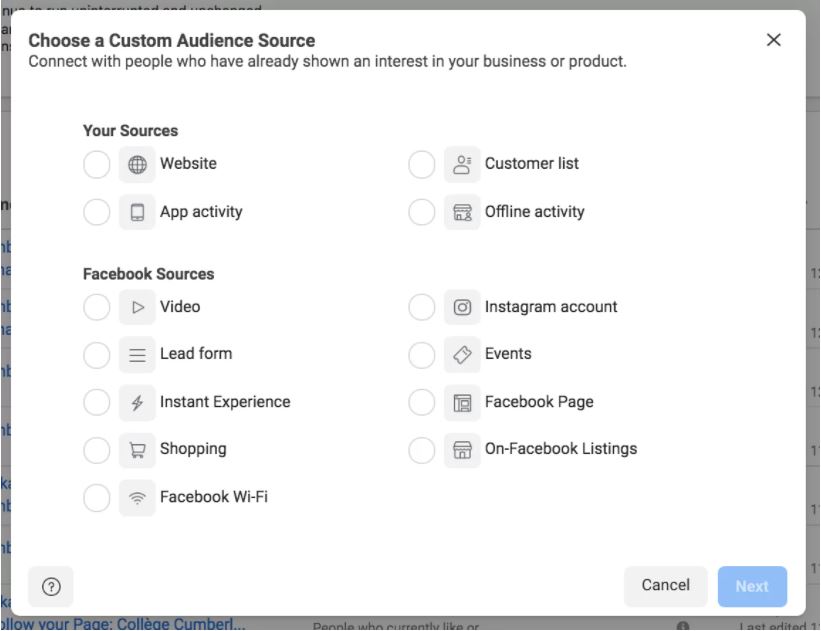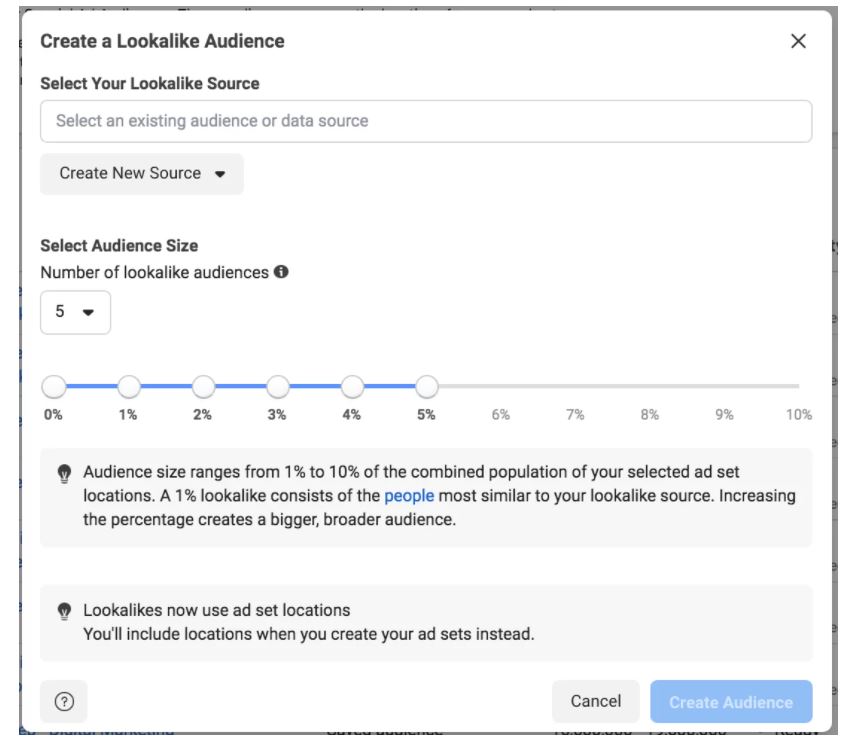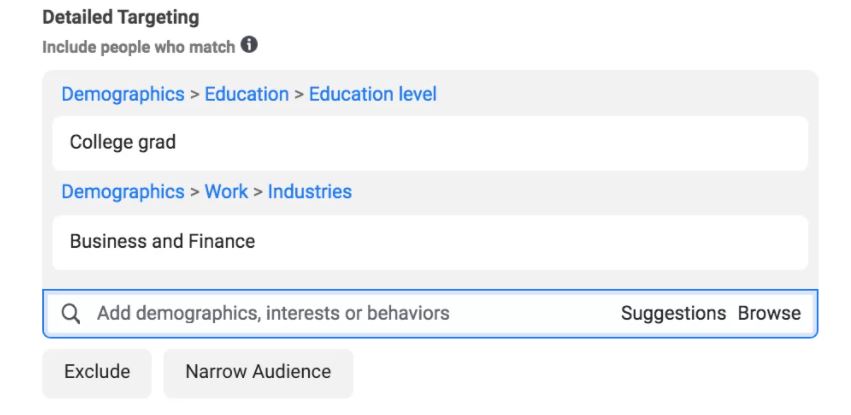Building the ideal social media ad campaign is a huge job in itself and marketers across all industries are constantly faced with the same common situations – you create the perfect social media ad campaign, complete with the right offer, adequate budget, and creative messaging, only to be dissatisfied with the results. This can happen for a variety of reasons, but in the case of Facebook Ads, the problem is often related to targeting as it requires practice, strategy, and precision to target your ideal prospects among the platform’s monthly active users.
Why does the education sector need to use Facebook ads?
When it comes to operating an effective paid campaign to improve enrolment statistics across Facebook and Instagram, Facebook ads are the best place to start. It’s quick, precise, and most importantly cost-effective. An increasing number of schools, colleges and universities are using Facebook and Instagram to promote their offerings, curriculums, and student achievements. However, organic posting doesn’t have the reach schools require to accrue admissions.
Have a well-defined student or parent persona
Believe it or not, much of the foundations for a successful Facebook Ad targeting strategy is built before you even look at the platform’s options. Before you begin your marketing, you must have a clearly defined target audience in mind. Otherwise, you’ll likely find yourself browsing through a plethora of targeting options, trying to figure out which ones will likely get the best results for your educational institution. Instead, define and set out the qualities of your target persona ahead of time so that it’s just a matter of matching your Facebook ads audience to what you had in mind. Aim for as much detail as possible for the best results. Consider prospects’ outside interests and hobbies, publications they might read alone, and even their digital habits like device usage and browsing behaviour, in addition to simple demographics, regional, and educational parameters. These kinds of factors can help you make the most of Facebook’s laser-focused audience parameters.
Facebook Ads: A guide for educational institutions
It may take some time for you to get the hang of Facebook Ad Manager if you’re new to social media advertising. But, given that 96% of marketers believe Facebook is the most effective social media advertising platform, now is the best time to get started. To begin, Facebook advertising has four tiers, as demonstrated in the diagram below. Consider not only creating a few ads but a few sets of ads, under a single campaign if you really want to maximise the platform’s power.  Image Source| LOCALiQ.
Image Source| LOCALiQ.
To begin, create a campaign that focuses on achieving a specific goal. Then, for each ad set, highlight a distinct aspect that motivates prospects to achieve that goal. For example, a business school might wish to run a Facebook campaign to increase enrolment in an online programme. They may build ad sets focusing on the following selling points: career opportunities, innovative course content, and the option to earn your degree entirely online. The ads themselves could be in a variety of formats and areas on Facebook.
Set Facebook advertising goals for your educational institution
Whether you’re new to Facebook ads or have run countless campaigns, setting goals before you start your next campaign is always a smart idea. Begin by posing the following questions to yourself:
- What am I promoting?
- Who am I targeting?
- What are their main concerns?
- What stage of the admissions process are they in?
- What is the goal of the campaign?
These ideas will help you target the correct audience, bid on the right metrics, and create the perfect content later on. In the meantime, these goals will assist your institution in determining its marketing objectives when it comes to creating your ads. Advertisers on Facebook must select a marketing objective from the list below, which will determine the type and pricing structure of their ads:
- Reach.
- Brand awareness.
- Traffic.
- Engagement.
- Installs of apps.
- Video views.
- Lead generation.
- Messages.
- Conversions.
Of course, you’ll still have to put in the targeting and bidding, by selecting an accurate marketing objective, you’ll have a better chance of reaching your recruitment goals.
Define your education institution’s target audience
Facebook’s targeting possibilities are varied as they are extensive. It’s up to you to figure out the best way to reach your ideal student audience. When selecting your audience parameters, you can choose from the following categories:
- Demographic Targeting: Users can be targeted based on their age, gender, and other factors.
- Location Targeting: Target users by region, city, and even postal code.
- Interest/Behaviour Targeting: Target users based on their online interests and activities.
- Connection Targeting: Target users who have a connection to your brand through connection targeting.
- Custom Audiences: Target users from your email list, or people who have performed certain actions on your website or social media platforms.
- Lookalike Audiences: Find users with similar characteristics to your custom audiences.
Consider focusing on demographic, location, and interest-based targeting to broaden your reach if you want to present your educational institutions to new prospects. Use the connection targeting and customer audience’s options to encourage your existing prospects to connect further if you want to convert leads who have expressed interest in your institution. With Facebook ads, the objective is to choose specific targeting options that accurately pinpoint high-quality leads while excluding outliers – while still remaining broad enough to reach a huge audience.
Remember: Your personas can also assist you in deciding on the most effective targeting options.
Demographic targeting
Demographics are clearly defined, demonstrable population groups into which a person can fit. The demographic parameters for Facebook ads start with three basic options:
- Age.
- Gender.
- Language.
If you’ve properly identified your target persona, these should be simple to implement. It’s important to remember that if you are going to serve ads in a language other than your own, it would be wise to create a landing page in the same language. Prospects who click on an ad in their native language, will anticipate the landing page to be in their native language as well, and may be less likely to covert if it isn’t.
Location targeting
Location is one aspect of your targeting that you absolutely need to get right. Facebook’s location-based targeting covers a wide range of places, including cities, countries, as well as more exact targeting by postcode or even the radius of a given address. You can also choose to target everyone who is currently in that location, including those who live there, are visiting there, or were there recently. In general, the more specific you can be about your location the better. Targeting a few specific towns, or even areas of a country, that are likely to contain interested leads, has a considerably better chance of converting than targeting an entire country. While it may appear that you are restricting your potential reach, you are actually increasing your chances of success.
Interest-based targeting
Interest-based targeting is where all of the time and effort you put into establishing your personas really begins to pay off. People who have expressed an interest in the particular fields your programmes or courses, related industries and places, or other interests or preferences that are typical of your target persona, can also be targeted. The platform uses a variety of variables to identify interests, including a user’s expressed likes and interests, apps they’ve used, and pages they have interacted with. This can arguably limit its effectiveness for educational institutions, as a prospect who is interested in your course or subject of study may not communicate that interest on social media. A prospective student for a language school, for example, may not have liked a website about learning English or express an interest. Nonetheless, adding a few interest-based fields might be really useful in directing your Facebook ads towards some potentially worthwhile prospects.
Behaviour-based targeting
Behaviour-based targeting factors are far more purpose-specific, and many of the available options in your education institutions social media ads may be unnecessary. Consumer classification, purchase behaviour, and anniversary occurrence are all options geared toward e-commerce advertisers and are unlikely to be relevant to your institution. However, based on your education institutions specific courses and goals, they may still be a few variables to consider. For example, the expat field, which allows you to target expats who have relocated to a country from elsewhere, may be quite useful for a language institution launching a campaign aimed towards local prospects.
The important of placement in targeting Facebook ads
In fact, one of the most crucial targeting elements to set in your ad campaigns is placement. For a start, knowing your target audience’s digital browsing habits might help you create more effective advertising. You should think about whether they’ll be using mobile devices, laptops, desktops, or all of the above. The Facebook ads network has extended to encompass the company’s other platforms such as Instagram and Messenger, selecting the platforms where your prospects are most likely to be active is critical to your success. Consider which features and locations of these platforms your prospects are most likely to visit and use. For example, the Reels feature has grown in popularity across all Facebook’s platforms. You should also check out the network’s more niche sections to see if your ad can be served there and do further research to see if your target audience is likely to use these features.
Using custom audiences
Facebook Ads Custom Audiences can provide you with plenty of possibilities if you want to crate remarketing ads to target prospects who have already expressed interest in your educational institution. Users who have already connected with your institution on the network. By visiting your page, liking, or commenting on a post, sending you a message, or click through on a link you provided, may be an excellent place to start. You can also create a custom audience based on traffic to your website outside of Facebook. By using this method, you will be able to connect with prospective students who have been searching for your institution online but have not yet discovered it on social media. Another alternative is to construct custom audiences based on lists if you have a large database of leads in your CRM system. Simply submit a CSV or text file containing your leads information, and Facebook will attempt to match them to the appropriate profile on their network.
Using lookalike audiences
Lookalike audiences are a terrific way to attract more leads who are similar to the ones you already have. Any existing audience can be used to establish a lookalike audience. After that, Facebook will create a fresh list of users with similar demographics, interests, and behaviours to your existing leads. Lookalike audiences can be constructed with varied levels of similarity to your source depending on your needs. It can be an effective way to grow your business in a market you have already achieved success in. For example: A Lookalike Audience developed with the targeting narrowed to 5% of the population will produce a bigger demographic that closely resembles the modelled audience.
Choosing the right audience
While all of these parameters have a lot of promise for your campaigns, it’s critical to keep your target audience as narrow as possible without being too restricted. You can narrow you audience down using Facebook ads by improving your precise targeting settings to make the criteria leads more exact. For example, here is a campaign that requires users to be both University graduates and working in the business and finance industry in order to be included.
If you find your audience is too large, you may want to consider excluding particular demographics. This is a great way to make sure your ad isn’t shown to those who aren’t likely to be interested in it.
Set your Facebook ad’s budget
Once you’ve decided on a paid advertising strategy, you’ll need to invest money in your ads to bring them to life. Advertisers have the option of bidding on which action they want to support. They might pay for each click on their ad or for every 1,000 impressions their ad generates, for example. You may use Facebook Advertisements Manager to monitor and alter your campaign once you’ve created your ads, set your budget, and identified your target audience.
Optimising your Facebook ad bids
You want to make sure you’re getting adequate value for your money with any digital marketing initiative. Without paying careful attention to your Facebook ad bids you risk spending too much for your ad results. Furthermore, if you bid too low, you will not even be seen. Setting your budget carefully Is the first step in optimising your ad bids. You have the option of bidding a certain amount every day or setting a lifetime budget, which is the total amount you will spend on your ad. You should define your length and budget after you’ve run a few ads and know which hours and days create the most traffic in order to deploy your ad spend most effectively.
The next stage in the budgeting process is to decide which aspect you want to optimise your ad for, such as link clicks, impressions, and daily unique reach. Choose wisely, as the one you choose will have an impact on who sees your ad and what metric you bid on. The optimisation factor you select will have an impact on your daily reach, as it’s far easier to generate impressions than to find people eager enough to click on your link. After you’ve set all your budget parameters, you’ll then be able to set your bids. Automatic bidding, in which Facebook sets a bid for you, and manual bidding, in which you select the price yourself, are the two options available to educational institutions. Remember: It takes a lot of practise to figure out how much to bid on each ad set, keep an eye on the bid range throughout!
Make your ads as clear as possible. Because Facebook has so much content, if your ad is confusing, your prospects will go on to the next post. To get the best results, make sure that every aspect of your advertisement is cohesive. The visuals, the body text, the title, and the call to action (CTA) should all work together to entice prospects to click your ad.
Feel free to contact us learn more about digital marketing for educational institutions and how LOCALiQ’s Client Centre can provide you with a full insight into your leads and audiences!








